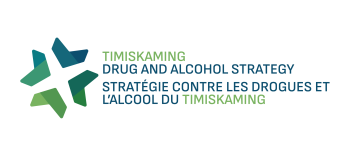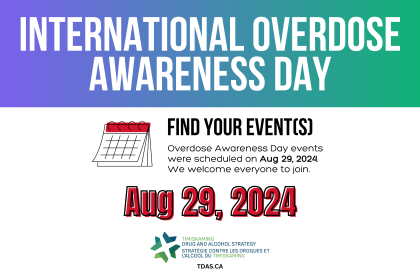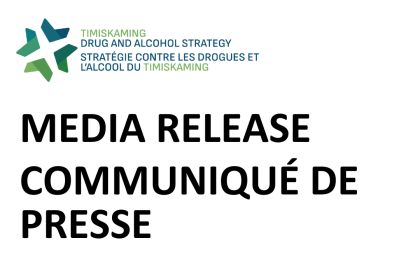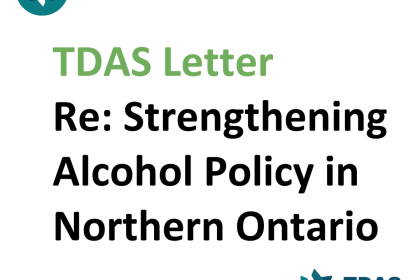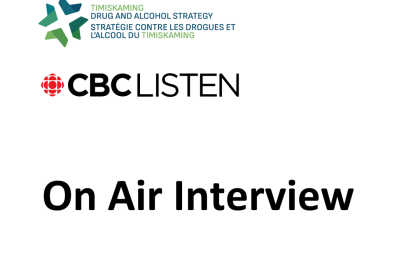Dec 12, 2023
Reposted from Simcoe Muskoka District Health Unit website.

Dr. Lisa Simon, Associate Medical Officer of Health
The holidays are often a time of gatherings and celebration. Alcohol may be a part of these festivities. In January 2023, the Canadian Centre on Substance Use and Addiction released Canada’s Guidance on Alcohol and Health (CGAH), replacing the 2011 Low-Risk Alcohol Guidelines. Since that time, there has been an increase in awareness and information being shared about the risks of alcohol consumption. This time of year provides an opportunity for us to reflect on our own alcohol use and to try to be more intentional in our choices around drinking so that we can feel good about it through the holidays and beyond.
During the holiday season, drinking at an event often feels like the most socially acceptable choice, which can make it hard to decline a drink. It can be helpful to ask ourselves ahead of time if we really want to drink and why: Is it because of social expectations, or is it an enjoyable way to celebrate the holiday, or is it just what we always do? Thinking about this in advance is an approach to better understand our behaviour.
The new guidance on alcohol and health helps to inform Canadians about the most current scientific understanding of alcohol’s impacts so that they can make informed decisions about their alcohol use. The guidance describes a continuum of risk, where the risk of harm is none at zero drinks per week. At up to two standard drinks per week, the risk of harm is low, avoiding most alcohol-related consequences. The risk becomes moderate with three to six standard drinks per week, with an increased chance of developing several types of cancer, including breast and colon. Consuming seven standard drinks or more per week is considered increasingly high risk, with the risk of heart disease or stroke increasing significantly. Each additional standard drink beyond this radically increases potential consequences. A key point is that ‘less is better’, compared to whatever amount you may currently drink.
One of the areas of evidence that has evolved since the previous guidelines is that, contrary to common beliefs, modest consumption of alcohol is not in fact protective against heart diseases. What’s not so new is our understanding that alcohol use – particularly more than two drinks on one occasion – increases the risk of harm to self and others, including injury and violence.
To put these guidelines into action, we need to recall what a standard drink actually is – not just whatever the alcohol industry is selling or someone pours into our glass. It’s 341 ml (12 oz) of beer, coolers, ciders or ready-made drinks; 142 ml (5 oz) of wine; or 43 ml (1.5 oz) of spirits with 40% alcohol, like whiskey, vodka or gin. Our perception can be further skewed when store-bought drinks are packaged in “tall boy” or extra-large sizes, restaurants offer multiple sizes for a single glass of wine or beer, or a wide range of alcohol strengths are available. The Canadian Institute for Substance Use Research’s standard drink calculator is a tool you can use to help convert your drinks into standard sizes so that you can understand just how much you’re having.
Avoiding or reducing alcohol consumption isn’t always easy. It’s important to recognize that the risk for alcohol-related harms is strongly influenced by a range of factors in our social, economic, and physical environments. This includes the accessibility and affordability of alcohol, exposure to alcohol marketing, social and cultural norms around drinking, coping with loss of cultural identity, racism, stigma and discrimination, as well as financial resources. Understanding and taking steps to address these wider social determinants of alcohol-related harms are important actions for governments and communities to take.
If you’d like to lower your alcohol consumption this holiday season, consider opting for non- or low-alcoholic beverages, setting and sticking to a drink limit, measuring alcohol when mixing drinks, and pacing your alcohol intake. Other approaches include alternating alcoholic drinks with water or non-alcoholic beverages and eating before and during alcohol consumption.
If you’re finding that alcohol use is creating a problem in your life and you’d like some support, you’re not alone. Speaking with your health care provider is a great first step. Additionally, ConnexOntario provides 24/7 access to information for mental health and addiction services.
With all of this in mind, Simcoe Muskoka District Health Unit wishes you, your family and our entire community much health and happiness this holiday season.
For more information about alcohol and health, visit smdhu.org or contact Health Connection at 705-721-7520 or 1-877-721-7520, weekdays from 8:30 a.m. to 4:30 p.m.
Dr. Lisa Simon is an Associate Medical Officer of Health at the Simcoe Muskoka District Health Unit. Her interests and primary responsibilities are in the areas of substance use prevention and harm reduction, chronic disease and injury prevention, child health, and health equity.
– 30 –
